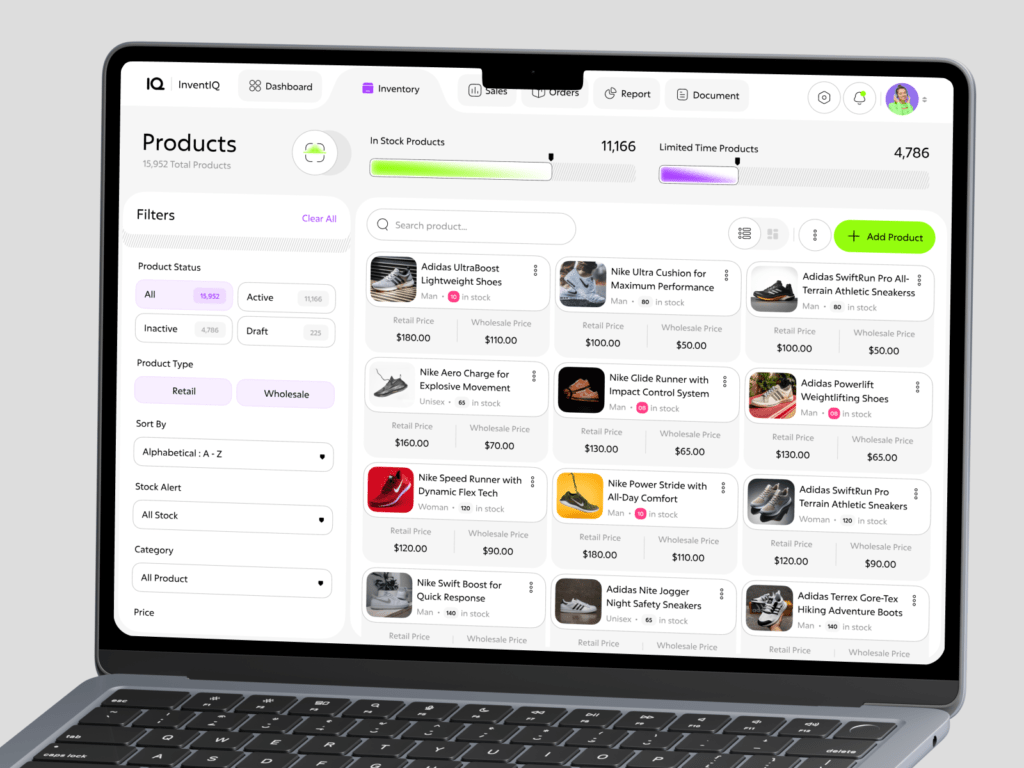In today’s digital landscape, 74% of consumers base their purchasing decisions on user experience, making effective saas product design more crucial than ever. In fact, 83% of executives risk losing revenue and market share due to poor customer experience, while the SaaS industry continues to grow at 13.7% annually.
However, most SaaS applications struggle with user retention, primarily due to ineffective UX design strategies. From feature overload overwhelming users to neglecting mobile experience – which affects 95.9% of the global digital population – many common UX design strategy mistakes can derail even promising products.
We’ll explore why these UX strategies fail and provide practical solutions to fix them. Our comprehensive guide covers everything from user-centered design principles to continuous iteration methods, helping you build a more engaging and successful SaaS product.
Common UX Design Strategy Failures
Many SaaS products struggle with user adoption because of fundamental flaws in their design strategy. Understanding these failures helps create more effective solutions.

Misalignment with Business Goals
Creating a balance between business objectives and user needs remains a persistent challenge in SaaS product design. Product teams often prioritize business KPIs over user satisfaction. Additionally, market research frequently overshadows actual user intelligence, leading to products that satisfy buyer personas but fail to meet end-user requirements.
Lack of User Research Validation
Product teams frequently skip crucial validation steps under tight development timelines. Furthermore, scattered user research across different development phases diminishes its impact on the final product. When teams develop products based on inadequate problem definitions, they risk creating solutions that miss critical user needs.
Poor Stakeholder Communication
Effective stakeholder management directly impacts project success. Many UX designers face challenges with stakeholder buy-in, consequently leading to project delays and decreased team morale. Stakeholders often share irrelevant information mixed with the relevant, making it difficult for design teams to extract actionable insights.
The key to addressing these failures lies in establishing clear communication channels and implementing structured validation processes. Product managers must define business problems while considering actual users alongside buyer personas. This approach ensures that design decisions align with both business objectives and user needs, creating a more balanced product strategy.

Critical SaaS UI Design Mistakes
Poor interface design decisions significantly impact SaaS product success rates. A closer examination reveals three critical mistakes that frequently derail user experience.
Overcomplicated Interface Architecture
Information architecture forms the backbone of SaaS applications, yet many products suffer from cluttered and overwhelming interfaces. A complex interface architecture leads to longer learning curves and higher churn rates. Users struggle to locate essential features when confronted with:
• Unclear information hierarchy
• Inefficient search functions
• Complicated navigation systems
• Overwhelming content labels
Inconsistent Design Patterns
Design inconsistency creates confusion and frustrates users attempting to navigate SaaS applications. Initially, this manifests through mismatched visual elements, subsequently affecting the entire user experience. Maintaining uniform UI patterns across buttons, menus, and forms reduces the learning curve. Moreover, establishing a comprehensive style guide ensures cohesive typography, colors, and iconography throughout the application.
Feature Bloat and Scope Creep
Feature bloat emerges as products attempt to solve too many problems simultaneously. Specifically, when SaaS applications continuously add new features without proper validation, they risk losing their original focus. This gradual expansion, known as feature creep, leads to:
• Increased development costs
• Reduced product performance
• Complicated user workflows
• Diminished core functionality
The solution lies in prioritizing essential features that align with user goals. Rather than implementing every possible feature, successful SaaS products focus on streamlining core functionalities that provide genuine value to users.
Data-Driven UX Strategy Solutions
Successful SaaS product design relies heavily on data-driven decision making to create exceptional user experiences. A structured approach to collecting and analyzing user data forms the foundation for continuous product improvement.
Key Performance Indicators
Effective UX metrics combine both quantitative and qualitative data to provide a complete picture of user satisfaction. Product teams should focus on:
• Feature usage tracking
• Customer satisfaction scores (CSAT)
• Net Promoter Score (NPS)
• Adoption rates
• Task completion times
Notably, collecting contextual feedback about UI/UX design enables teams to offer precisely what users expect, accordingly reducing friction and increasing engagement.
User Behavior Analysis
Understanding user behavior patterns primarily involves monitoring how customers interact with specific features and analyzing their navigation paths. Screen recordings essentially reveal the strengths and weaknesses of SaaS UX design. Heatmaps provide visual representations of user interactions, highlighting areas of high and low engagement.
User behavior analytics helps identify friction points within the product, therefore enabling teams to eliminate obstacles before they escalate. Certainly, tracking feature usage without coding through UI element tagging allows for detailed analysis of customer interactions across various segments.
Iterative Testing Framework
Rapid iterative testing involves running multiple experiments in quick succession to identify usability issues and test solutions. This approach undoubtedly helps improve product design efficiently before launch or during early adoption phases.
The testing framework should establish clear objectives before each session. Teams must collect baseline data first, then implement changes based on insights, and measure improvements through subsequent testing cycles. Product managers can analyze results within their expertise, though complex experiments may require specialized data product managers.
Building Resilient Design Strategies
Building resilient design strategies requires a structured approach that extends beyond individual design decisions. A well-planned framework primarily focuses on three key areas that ensure long-term success in SaaS product design.
Cross-functional Collaboration Models
Effective SaaS design demands collaboration across multiple teams and departments. A successful collaboration model includes these key roles:
• UX designers – Define overall strategy and align with business goals
• UX researchers – Conduct in-depth behavioral analysis
• Information architects – Create logical navigation structures
• Product managers – Coordinate design and product teams
• Developers – Validate technical feasibility
Following this structure accelerates product development and fosters innovation through diverse perspectives. Cross-functional teams altogether enhance decision-making capabilities and increase adaptability to market changes.
Change Management Integration
Since SaaS applications constantly evolve, integrating change management into design strategy becomes crucial. Change management orchestrates transitions while maintaining operational continuity, albeit with careful consideration of user needs.
The process begins by identifying stakeholders affected by design changes. Product teams must establish clear communication channels to articulate the reasons behind changes and their benefits. This approach ensures that updates align with both technical requirements and user expectations.
Risk Mitigation Approaches
Risk management in design involves a systematic approach to identifying and addressing potential issues. Generally, teams should conduct regular risk assessments that examine:
Design risk analysis employs specialized tools like Design Failure Modes and Effects Analysis (dFMEA) to ensure product compliance. Hence, prevention becomes the primary strategy, with design check-ins and user testing catching issues early.
Organizations must implement strong encryption for data protection and regular security audits to examine storage systems. Since these applications handle sensitive information, security awareness becomes an integral part of the design strategy.
Conclusion
Risk management in design involves a systematic approach to identifying and addressing potential issues. Generally, teams should conduct regular risk assessments that examine:
Design risk analysis employs specialized tools like Design Failure Modes and Effects Analysis (dFMEA) to ensure product compliance. Hence, prevention becomes the primary strategy, with design check-ins and user testing catching issues early.
Organizations must implement strong encryption for data protection and regular security audits to examine storage systems. Since these applications handle sensitive information, security awareness becomes an integral part of the design strategy.




